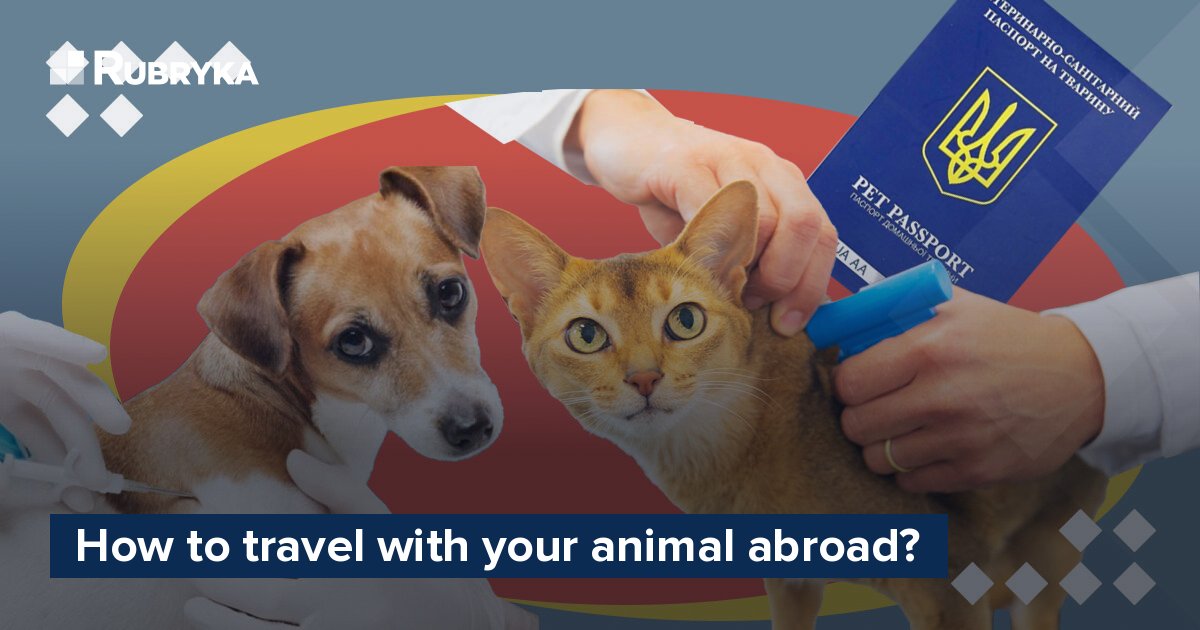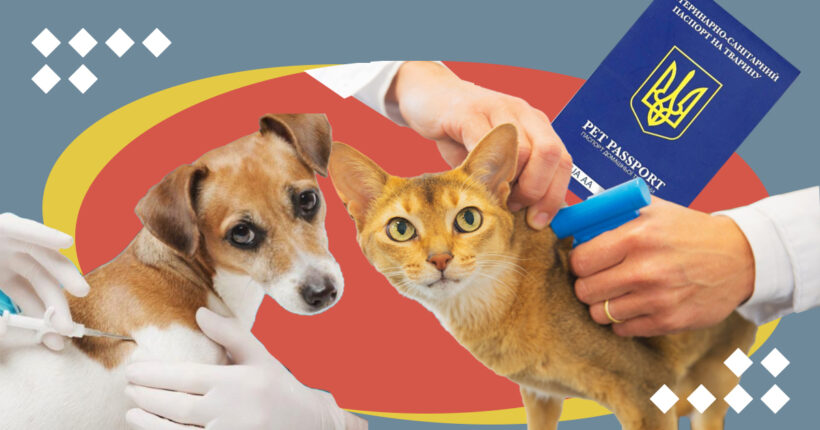
What is the problem?
During the war, many Ukrainians demonstrated that pets are not just animals but full family members. Many Ukrainians left their homes and moved to safer regions of Ukraine or abroad with their pets. And if, at the beginning of the full-scale invasion, it was possible to take an animal abroad without having any documents on them, now the rules have returned to the pre-war ones and, therefore, have become more complicated. If you plan to travel or move abroad with your pet, you must meet some requirements and complete certain documents for a smooth border crossing.
What is the solution?
No, a visa is not required. However, your pet needs to be chipped, vaccinated, have a veterinary passport, and have a certificate confirming its health.
Viktor Markov, a doctor of veterinary medicine, head of veterinary service Multipass.Vet told Rubryka how to take an animal abroad, prepare a four-legged one for a trip and correctly issue all the necessary documents.
How does it work?
Research is a must
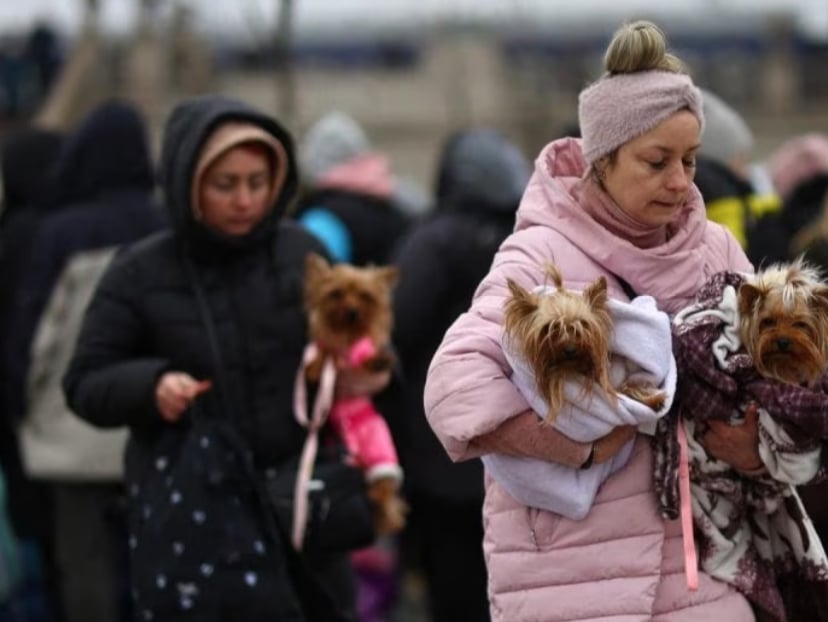
Evacuation with animals at the beginning of the war. Photo by REUTERS
At the beginning of the full-scale invasion, people took dogs, cats, birds, and other animals abroad without restrictions. However, from May 6, 2022, the simplified regime for the export of domestic animals, in particular to the countries of the European Union, was canceled. Under the updated rules that apply to dogs, cats, and companion animals, the animal and its documents must meet international border crossing requirements.
From the point of view of the government authorities of the country into which the animal is imported, your pet can potentially be dangerous for both other animals in that country and its residents. The danger can be social (aggressive, dangerous species or breed) and medical — your pet can be sick or be a carrier of diseases hazardous to animals and people. Therefore, the veterinary services of all countries, including Ukraine, adhere to a number of requirements and rules that significantly reduce the potentially dangerous risks associated with animals imported from another country.
The requirements of different countries may differ and change depending on the economic situation in the country, that is, on the level of disease in animals there. Therefore, it is essential to carry out all the necessary veterinary measures required by the legislation of the country where you are going and the countries you will be passing, even at the early stages of trip planning. You can get acquainted with all the requirements for the non-commercial movement of animals, which is the official name of the procedure for entering your pet into another country, on the specialized government websites of the countries you are going to, or by consulting veterinary clinics. Also, before leaving, you must familiarize yourself with the ban on importing certain breeds of dogs recognized as aggressive. The list of these breeds can differ greatly even in different regions of the same country, so you need to familiarize yourself with the rules for keeping pets in the region where you are going.
It is necessary to approach this issue as responsibly as possible because failure to comply with all requirements will lead to a ban on the animal's entry or to a long forced quarantine at the country's customs where you planned to arrive with your pet.
Many people mistakenly believe these requirements are written just to be there and often overlook them. This judgment arose from the stories of animal owners who, in the first months of the large-scale invasion, crossed the border with neighboring countries quite often without any documents at all. It was like that for the first six months to a year. Thanks to the support of neighboring countries, the requirements for those who left the country as a result of the war were greatly simplified.
To minimize the risks of introducing infections into the country, temporary veterinary stations were set up at most border points, where animals were vaccinated, microchipped, and examined. Clearly, these measures did not meet the requirements for the import of animals, so after some time, the requirements for the import of animals were restored. The last was Poland in the summer of 2023. Today, crossing the border with a pet is possible only after fulfilling all veterinary requirements.
Markov emphasizes the key role of the sequence of necessary procedures, documents, and studies before you and your pet leave for another country.
What should be done to cross the border with a pet?
Algorithm of actions of the animal owner
Step 1: carry out chipping (identification)

Illustrative photo.
Chipping is the only accepted method of animal identification in most countries, just like fingerprints and photos in a biometric passport. It is a mandatory stage for taking an animal abroad.
Anyone can carry out chipping, but a veterinarian usually does this. The veterinarian inserts a microchip under the animal's skin. The chip contains a unique 15-digit number. This number can be read using a special scanner, which is the key to information about the animal and its owner.
The chipping procedure is quite simple and painless. Chipping must be carried out before any other medical manipulations shown in the documentation for taking the animal abroad. Vaccination and other procedures require identification of the animal through its chip. Before any manipulations, the veterinarian must check the presence and compliance of the chip number with the declared data to avoid errors and ensure correct documentation for your animal's travels abroad.
During customs control, the compliance of the chip number and the data in the documents accompanying the animal must be checked. A discrepancy of even one digit will lead to a ban on crossing the border.
Also, if the chip was installed on your animal a long time ago, to avoid misunderstandings, it is recommended to check the functionality of the chip and the correspondence of its number in advance at any veterinary clinic or institution that works with animals. In this way, you can prevent various surprises at the border.
Step 2: get an international veterinary passport
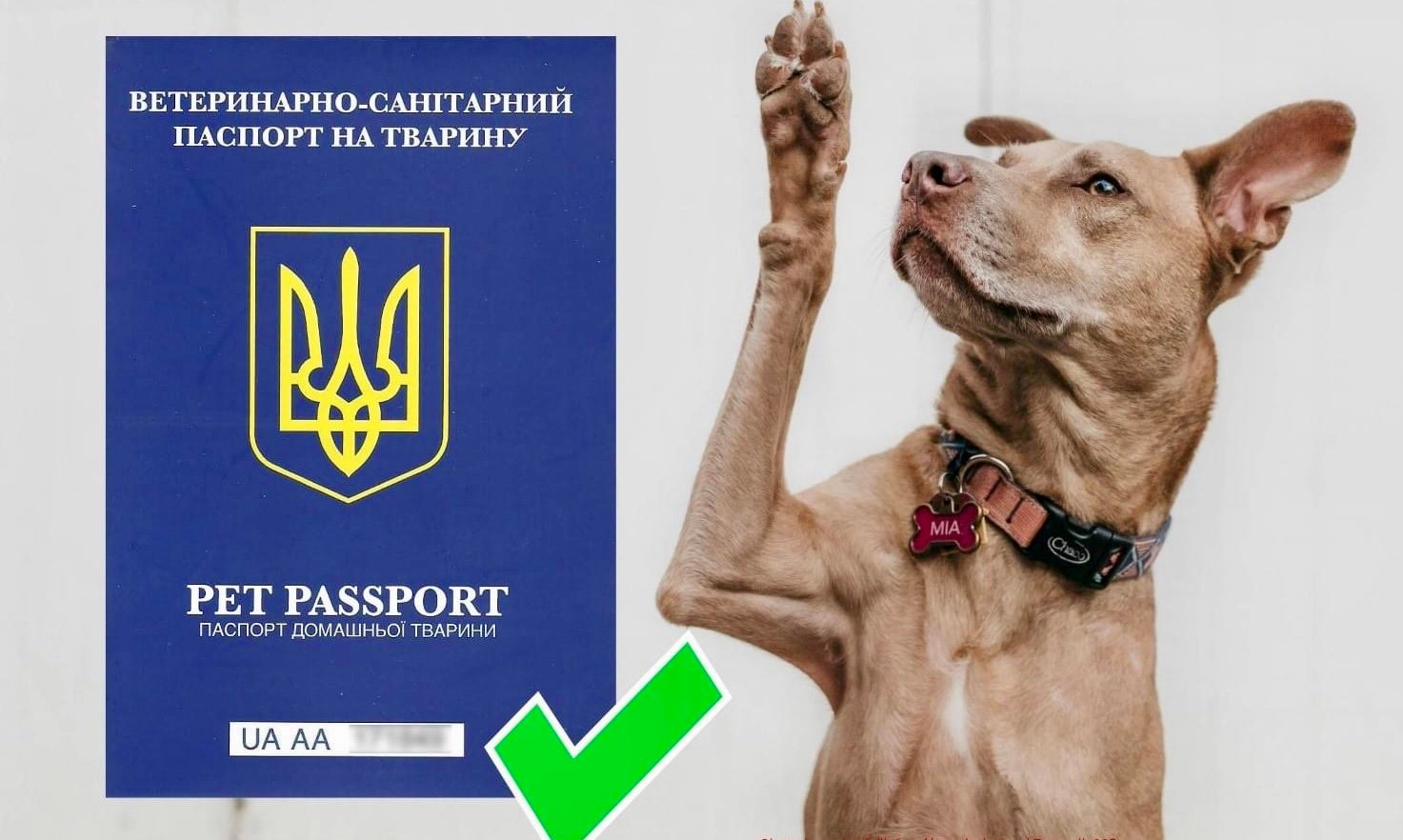
This is what an international veterinary passport should look like,
Outside of Ukraine, there are no requirements for the appearance of an animal's passport; it must contain the necessary information — the animal's identifier (chip), vaccination notes, preventive treatments, and the owner's data. But in Ukraine today, at the legislative level, there is only one version of the form of this document, and it is issued mainly only by state veterinary doctors. However, private doctors can also issue it in accordance with the law.
What you need to know about obtaining an international passport for an animal:
- This document can be obtained only from a licensed veterinarian;
- Passports are issued only to chipped animals, and the chip code must be entered into the passport;
- It is possible to enter the data of two owners. If you are not the only one traveling with your pet, it is advisable to enter the data of the other owner;
- The passport must contain the signature of the owner or owners;
- During the implementation of any preventive measures (vaccination, antiparasitic treatment), they must be entered into the international veterinary passport;
- It is not obligatory to put a photo of the animal in the passport.
Step 3: vaccinate the animal for going abroad
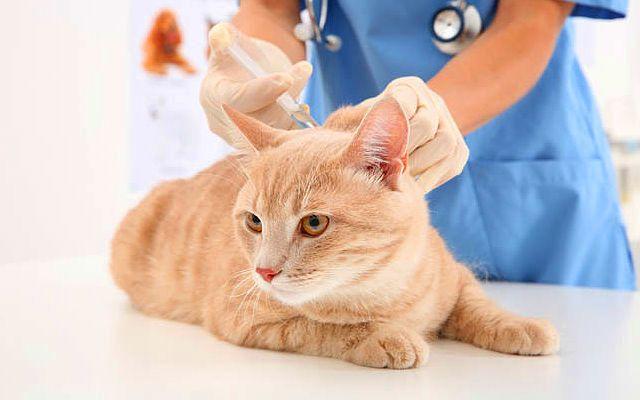
Illustrative photo.
Vaccination against rabies is a mandatory condition for crossing the border. The EU does not impose any restrictions on vaccine manufacturers, provided they are certified. Today, animals vaccinated with any vaccine officially presented in Ukraine do not have any restrictions. Rabies vaccination is mandatory for predators (cats, dogs, ferrets, etc.).
Vaccination against other diseases is not mandatory for some countries of the European Union, but some countries require specific preventive treatments and vaccination against certain diseases. For example, Malta, Finland, the Netherlands, Great Britain, and Ireland require mandatory treatment of dogs entering their territory from echinococcosis (anti-parasitic treatment) no more than five days before entry.
Step 4: conduct a test on the intensity of the titer of antibodies against rabies
This is a test that shows whether the animal is really protected from rabies. It can be carried out no earlier than 30 days after vaccination against rabies and no later than the expiration date of the vaccine. The test for most countries is valid for life, subject to regular revaccination against rabies. However, some countries may set a limitation period for the test, ranging from 6 to 36 months.
At the time of blood sampling, vaccination should not be overdue — no more than a year should pass from the day of vaccination. Crossing the border is possible only after the three-month quarantine from the moment of blood sampling and with a valid test for the intensity of immunity against rabies.
Step 5: get the F1 veterinary form and the international veterinary certificate

Illustrative photo.
F1 is a certificate of the animal's health and the availability of all necessary examinations, vaccinations, treatments, and veterinary documents. It is issued only after the animal is examined by state veterinarians. It is valid for three days and extends only to the territory of Ukraine.
To cross the border, the F1 certificate must be exchanged for an international veterinary certificate. This version of the F1 form of the international model is issued only by customs veterinary services at customs control points or in local bodies of the State Production and Consumer Service based on F1, examination, verification of all necessary documents, processing, and vaccination. The validity of the international veterinary certificate extends both to Ukraine's territory and beyond its borders.
Will it definitely work?
So, let's summarize the procedure for preparing documents for going abroad:
- The first stage. Identification (chipping) — vaccination — issuance of an international veterinary passport.
- The second stage (after 30 days) involves taking a blood sample to test the intensity of the antibody titer against rabies.
- The third stage (after three months) — is preventive (anti-parasitic treatments) and registration of the F1 form for travel.
- The fourth stage is passing customs veterinary control and obtaining an international veterinary certificate.
- Accordingly, no less than four months will pass from the moment of the first actions to departure.
In addition, it is worth taking a certificate about the lack of pedigree value and a special means of transportation — a complete carrying container.
Please note: transport equipment such as carriers, muzzles, and leashes are carrier requirements and may vary from carrier to carrier. Therefore, it is worth checking with the transport company before the trip to find out what their requirements are for transporting your pet.
What mistakes do people make who want to travel with an animal?
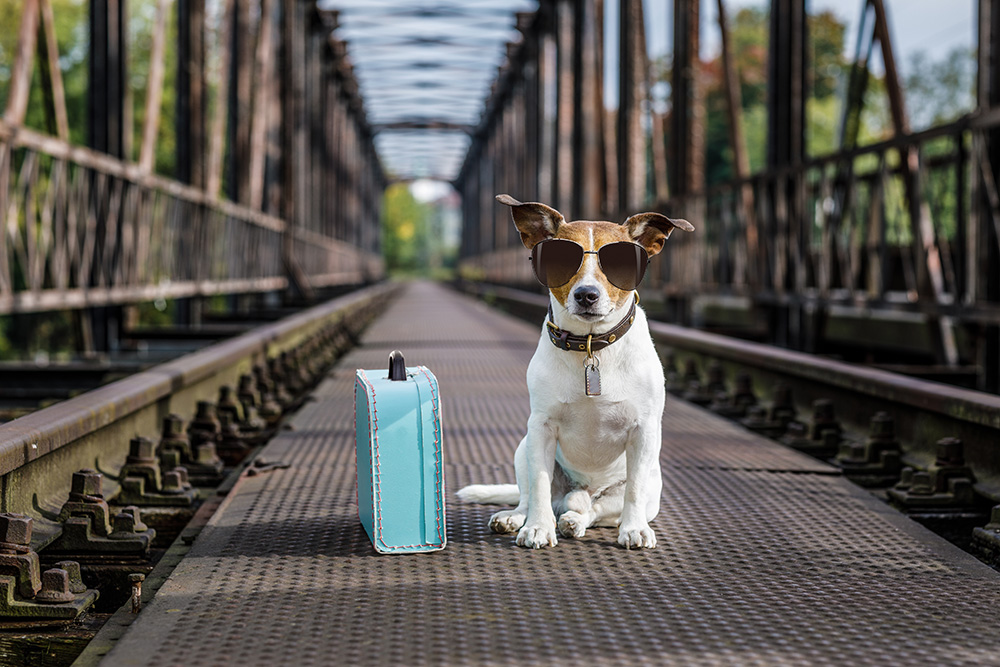
Illustrative photo.
According to the expert, the most common mistake pet owners make is starting to worry about their animal's health and preparing documents just before departure. A recent study by Gradus Research and Royal Canin shows that only 24% of pet owners regularly visit a veterinarian for preventive examinations or routine procedures for their pets.
There is also a widespread problem when the owner has all the necessary research and documents but postpones the next vaccination—in this case, everything has to be started from the beginning: vaccination, research, and treatment.
Rarely, but there were very unpleasant cases when the owner left Ukraine, but foreign customs officers discovered some violation or lack of documents. In this case, the owner has a choice — either to return back or to leave the animal for customs veterinary quarantine in another country. The essence of this event is that the animal lives for some time in a special facility, where it is given all the necessary measures and meets the required deadlines. The owner pays all this, and the prices for veterinary services outside Ukraine are much higher than in the homeland.
According to Markov, this does not happen often because, in most cases, the lack of documents and studies is discovered at the stage of issuing the F1 form or international certificate in Ukraine.
A very rare phenomenon is the migration of a chip in an animal or its defect (impossibility of identification).
Even more useful solutions!
Can I travel with a cat or dog if the animal is pregnant or has a chronic illness?
Animals without signs of infectious and parasitic diseases are allowed to travel. Pregnancy is a normal physiological state of an animal, it is not a contraindication to travel, as well as a huge number of other diseases. That is, there are no legal contraindications against the travel of an animal, for example, with diabetes, kidney failure, prostatitis, and others that do not pose a threat to other animals or people.
How to act if the pet is not a cat or a dog but, say, a raccoon or a parrot?

Illustrative photo.
Traveling with cats, dogs, or other domestic carnivores is much easier (in terms of obtaining permits) than with birds. The fact is that international standardized norms are very clearly prescribed for domestic predators and vary greatly for other types of animals. In many countries, there is a direct ban on the import of exotic animals. For example, it is forbidden to import domestic reptiles and snakes into Turkey. A big problem is that mandatory tests (such as the titer of antibodies against rabies in predators) are not conducted for other types of animals in Ukraine, or the laboratories that conduct them are not certified by the international veterinary community. All this is because the demand for such research is quite small. Therefore, even though the list of documents and requirements for such animals may be much less than for predators, obtaining them will be much more difficult. Or vice versa, nothing is required for the trip except identification (chipping) and a veterinary certificate.
"Therefore, if you are planning a trip with such pets, be sure to consult a veterinary specialist beforehand," advises Markov.


